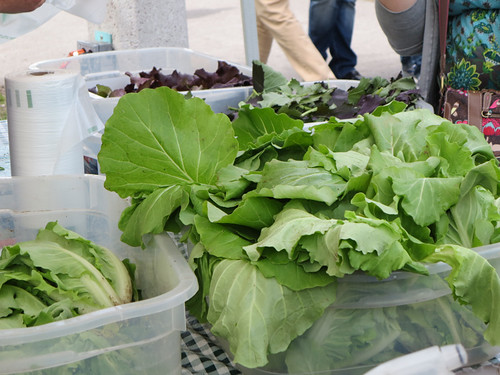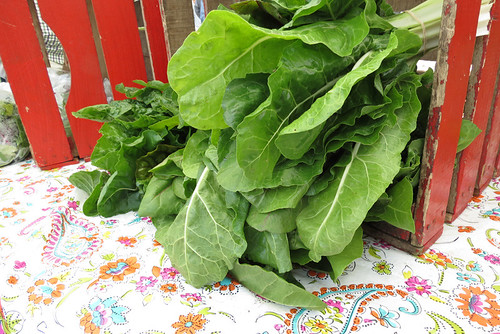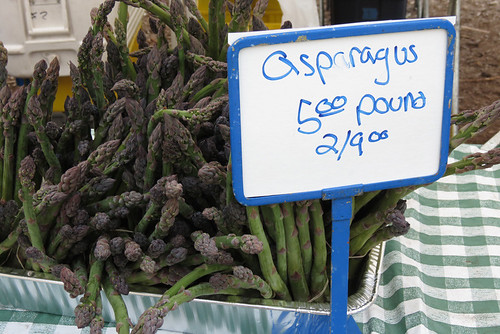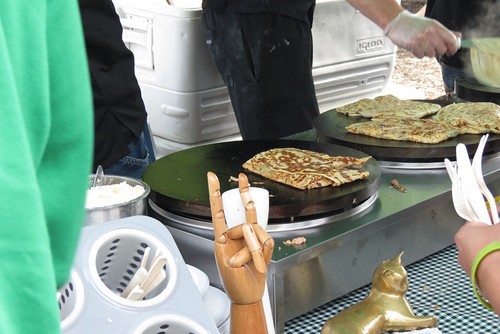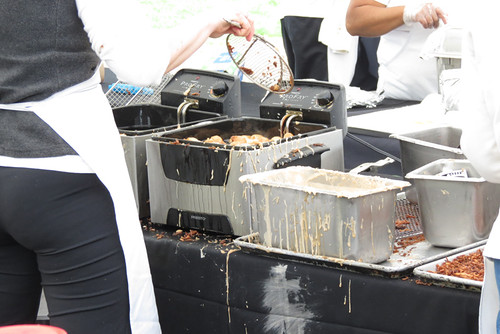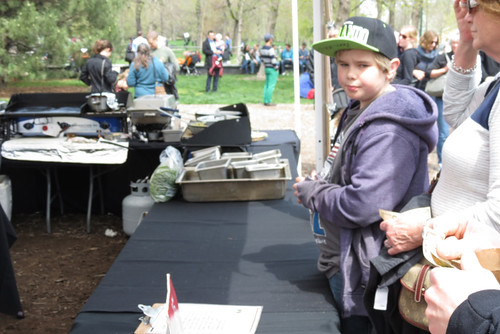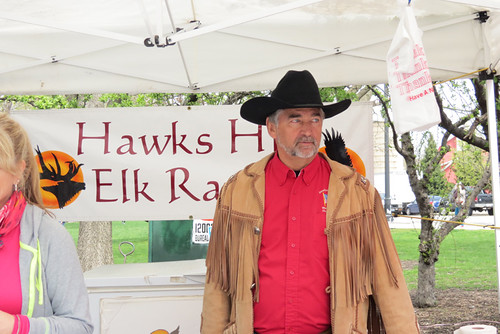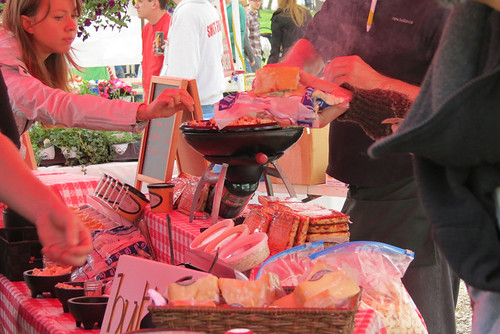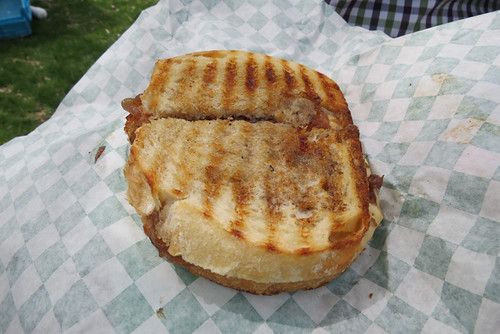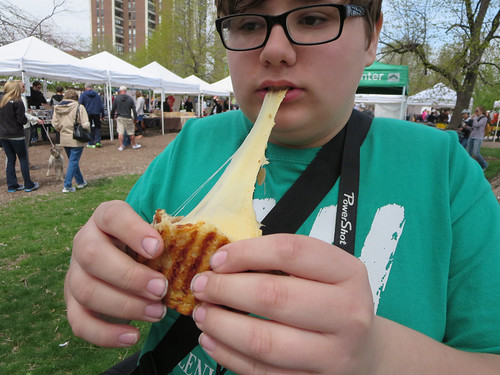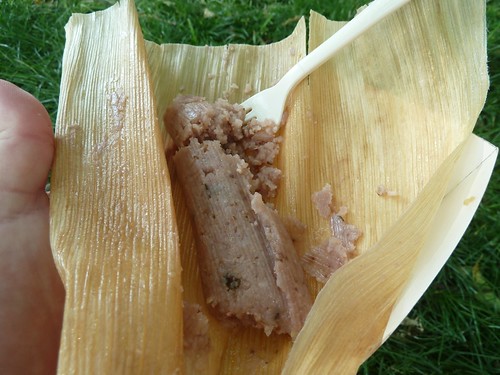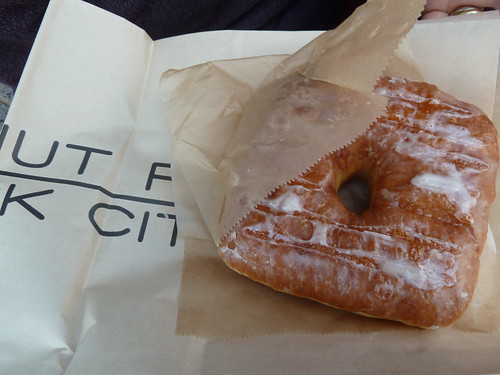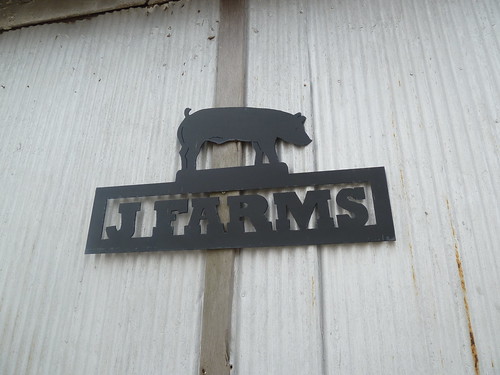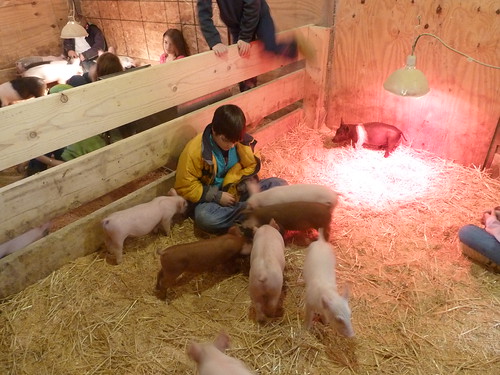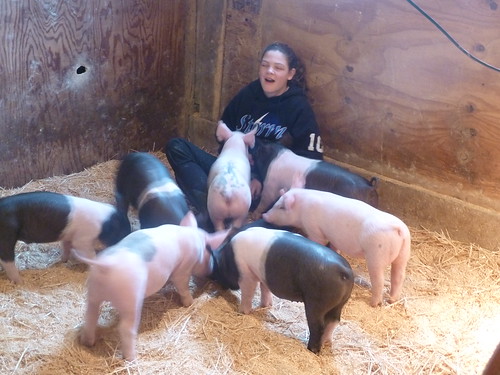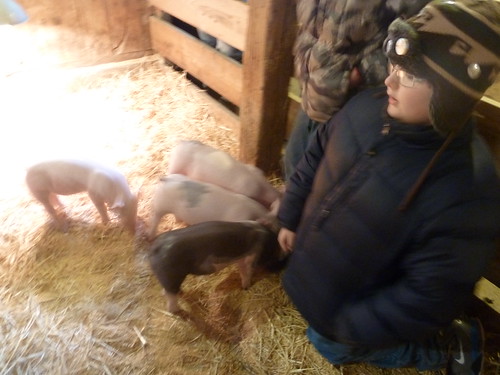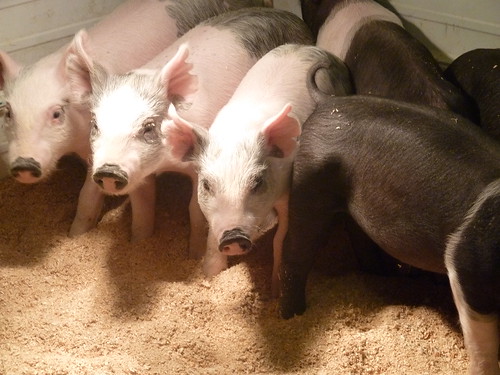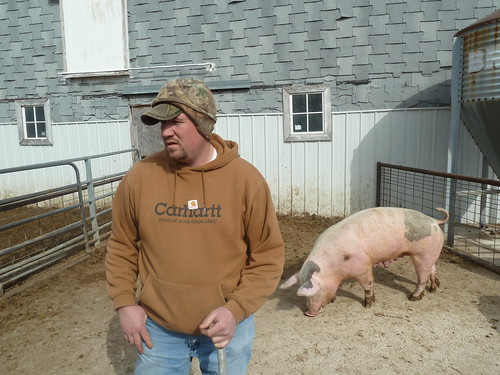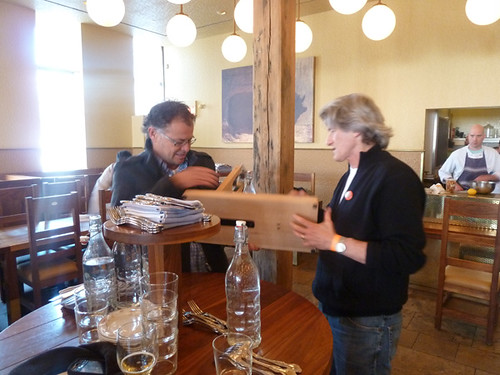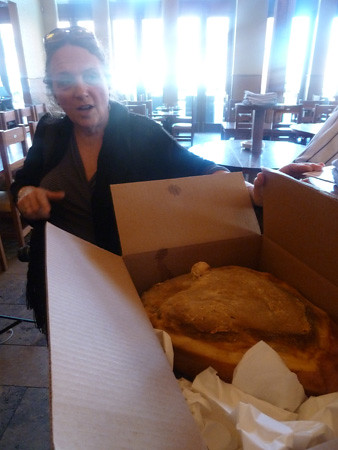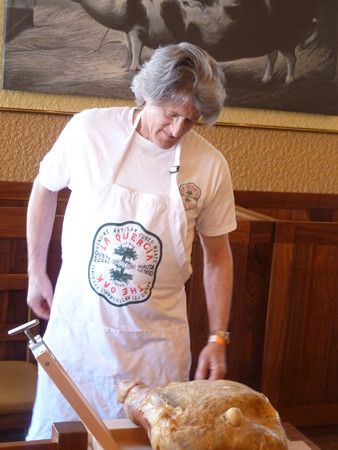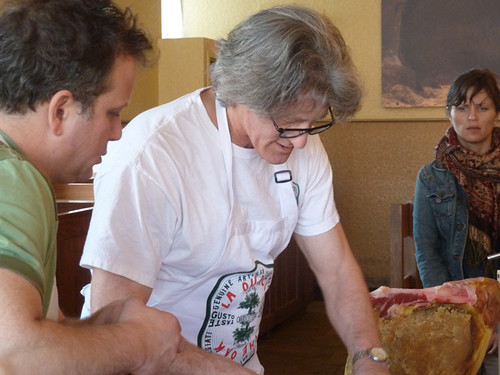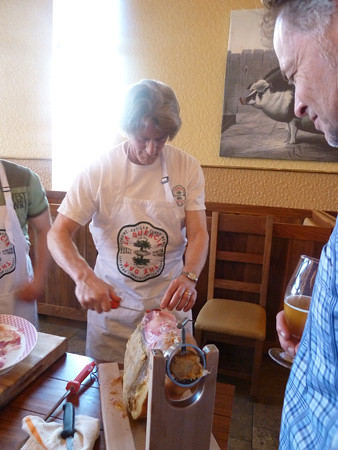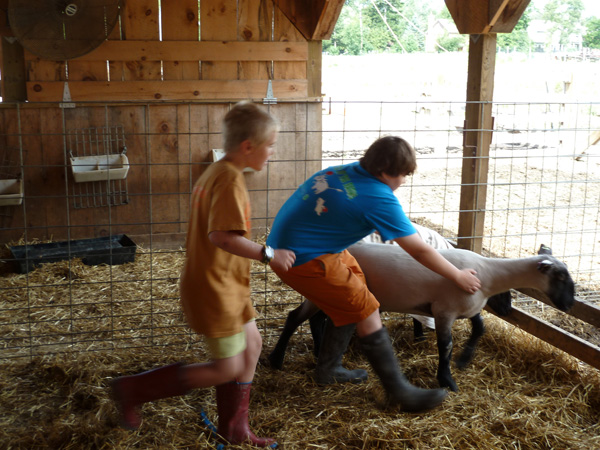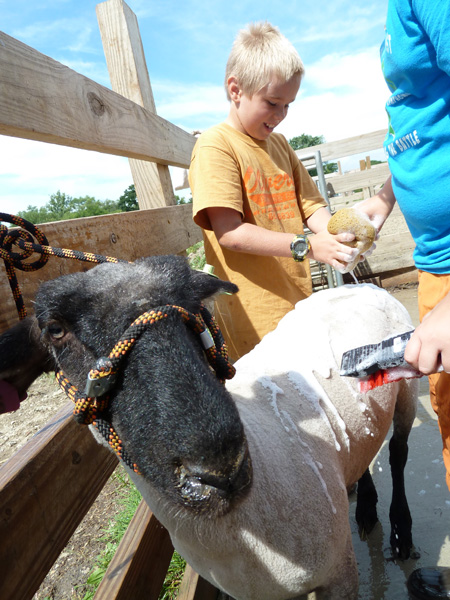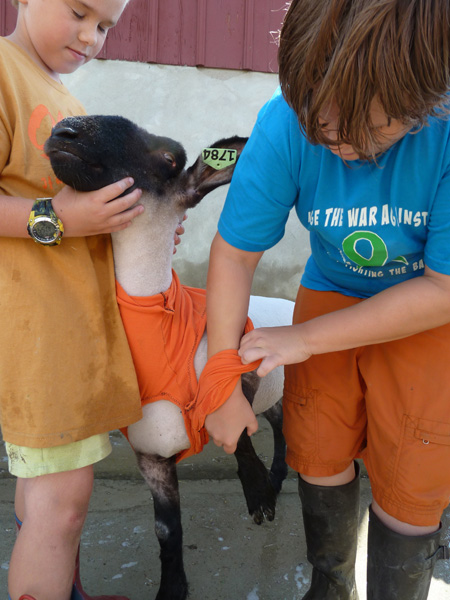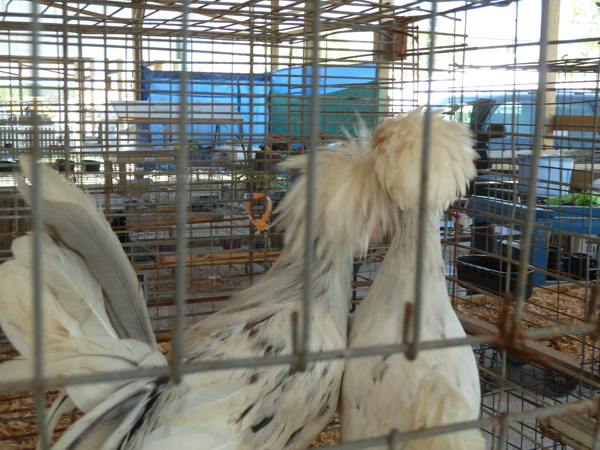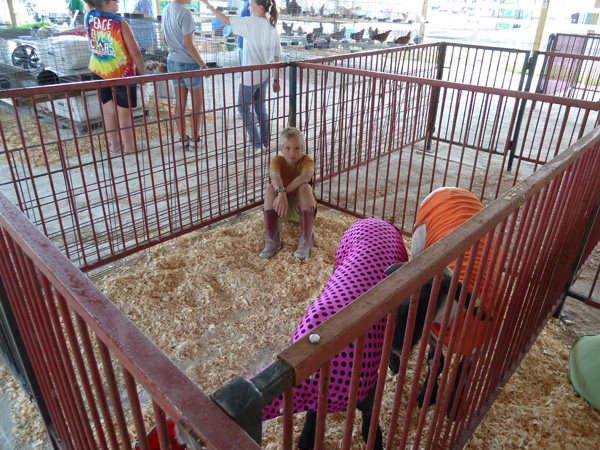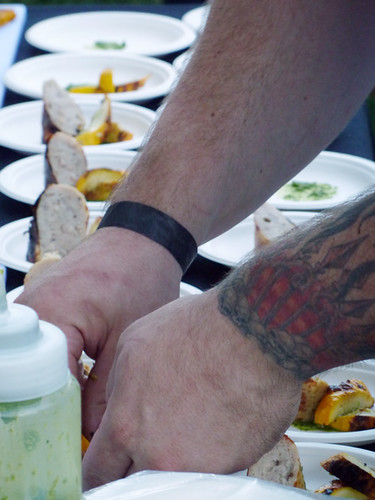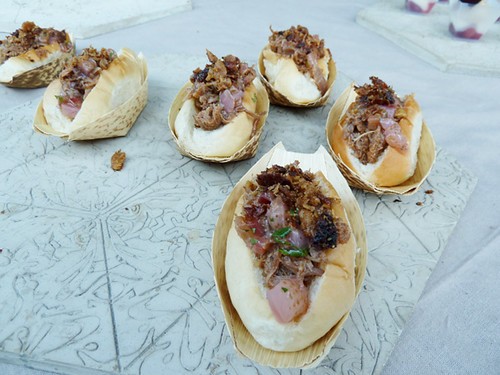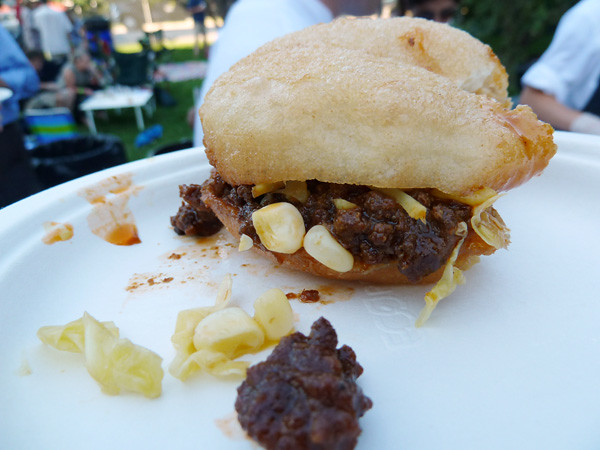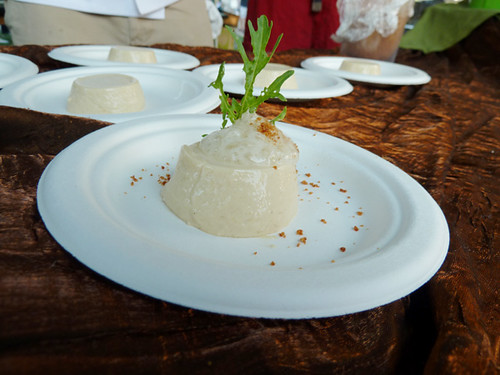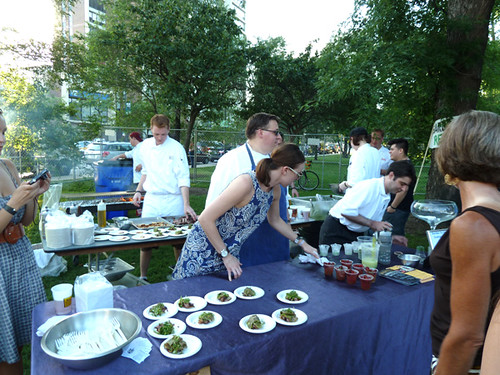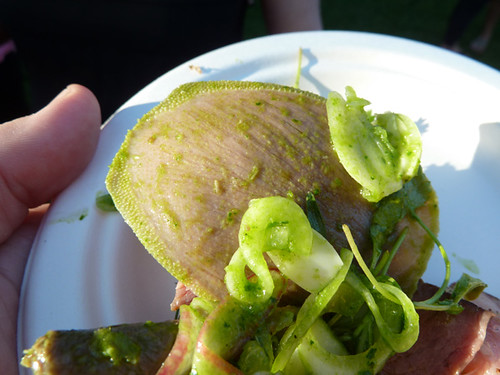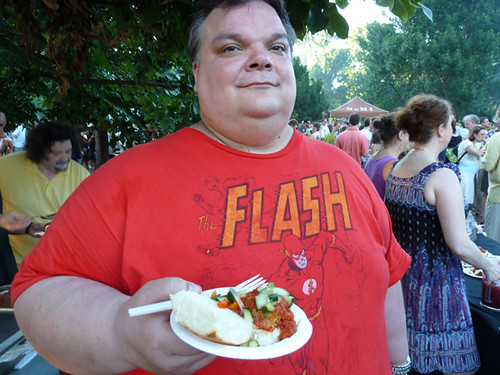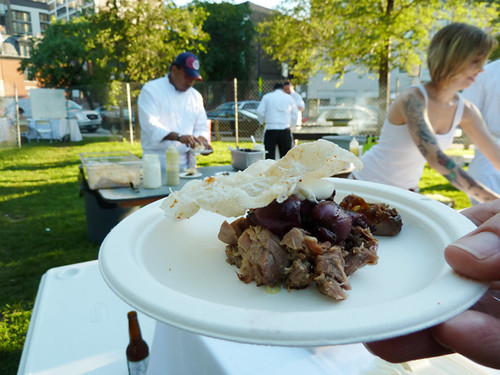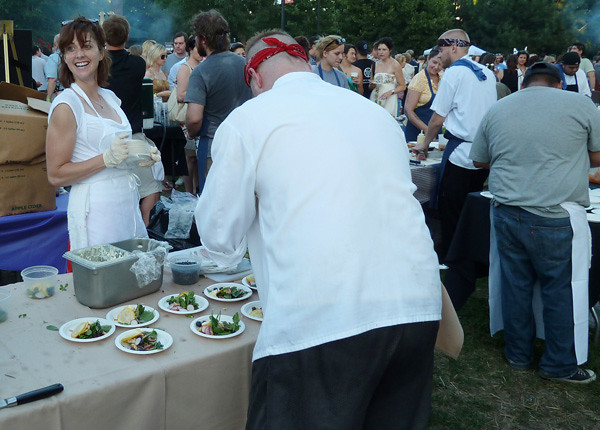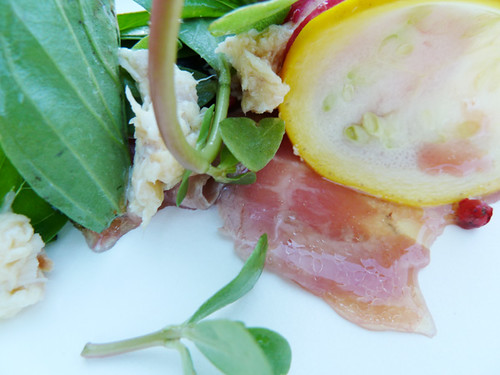I haven’t been anywhere worthy of a post on its own, but I have little fragments of semi-interesting things piling up, so… EVERYTHING MUST GO! We’re clearing out the inventory!
* * *
Would you like a free box of our organic produce? emailed a company called Door To Door Organics. Sure, said I:
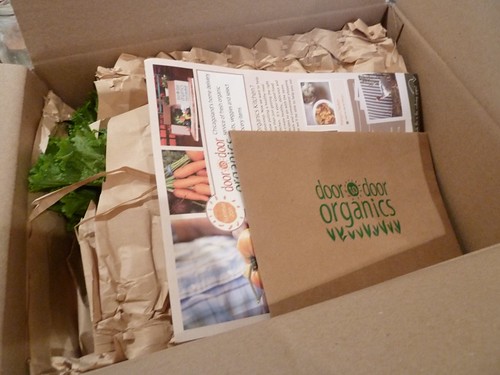
The stuff was very pretty, almost too perfect for farmer’s market stuff. Maybe they just prettied my box up because they hoped I’d take pictures. (UPDATE: they say no, they’re all this gorgeous!) Anyway, nice looking and tasting stuff, and I think the quantity I got was a “Bitty Local Farm Box” which goes for $26.99. That strikes me as on the high side given what was in it (seen below, plus there was some parsley and kale), but I may be deluding myself about what the same quantity would cost at Whole Foods— that’s surely a $4 box of tomatoes, $4 worth of peppers, etc. at yuppieville retail prices. (The two small ears of corn were kind of silly, given that that’s probably the cheapest thing in the box at the moment.) I feel like you could beat this price with an individual farmer’s CSA by a good ways, but I have a feeling they’re doing more active management of what you get, so you’d get more consistently useful boxes than some of the ones I got from Genesis last year when I did their CSA. So for the right person, this seems to be the right service.
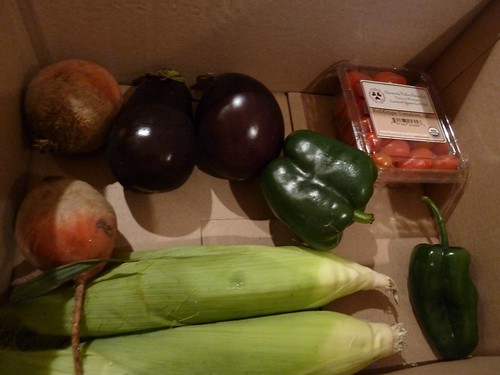
I’ve done a few things with several of the things I got, like poking garlic all over the eggplant and tossing it on the grill to make baba ghanoush as an appetizer for my wife’s birthday dinner:
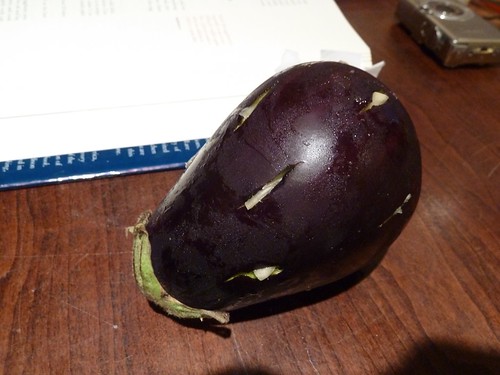
So anyway, seems like a good addition to the organic food delivery scene, and if you’re interested, I have two offers. “Bacon2011” is a promo code that will get you $10 off an order; and I have the awesome power to award a freebie box to the first person to comment that they want it in the comments on this post. UPDATE: THE BOX IS SPOKEN FOR Go for it!
* * *
SKY FULL OF BACON EXCLUSIVE MUST CREDIT: I learned, this weekend, the followup to the infamous Paris Club stinky barn smell story. So far as I know this hasn’t been reported anywhere.
As you may recall, Paris Club, the hot new Sons of Melman place in the old Brasserie Jo space, was reported to smell like manure… sometimes; it was supposedly because the recycled wood in the place came from a barn. Mike Sula sensed a vast conspiracy on the part of people attending a VIP preview to cover up the stench, but others questioned whether it was there all the time, or only under certain circumstances (David Hammond and I walked through at 10pm and didn’t smell it), or existed at all.
Here’s what I was told. First off, the wood didn’t come from a barn at all, but from a factory, I was told. Nevertheless the recycled wood was a suspect at first and various things were tried, such as cranking the heat up as high as it would go to see if they could bake the smell out.
But then suspicion shifted to the venting from the toilets. (Which is no doubt why they didn’t send out a press release announcing the solution of the problem, even though I’m sure this kind of post-opening emergency fixer-upping is more common than we know.) They came to this conclusion for the very logical reason that the smell tended to appear only during a certain window of time— apparently after enough people were there to have used the toilets sufficiently, but not so many that the smell of people, perfume and dinner being served proved stronger. In the end, they expensively ripped open the walls and rebuilt some of the ventilation system, and the “barn” smell went away… leaving only the scent of Axe and desperation, I’m sure.
* * *
Why, when I’m making appetizers for two different parties, do I add to my workload by insisting on canning some beets along the way? Because I had the beets, dammit. And besides, just think of the time I’d save using the hot water from the canning afterwards to loose the skins on some tomatoes for bruschetta. Yeah, right.
Anyway, I was making something for the LTHForum picnic out of David Thompson’s new Thai food cookbook, Thai Street Food. It’s a big gorgeous book but I have to say, as a practical cookbook, I’m having some trouble. Things have always worked out in the end, based on some winging it and the fact that even bastardized, winged Thai food is better than most things. But the things that seem easy for him to find and do, are not easy for the casual reader.
One thing that I’ve learned has tripped up better cooks than me is a common ingredient in the recipes— coriander root. In theory, this should exist, since coriander is cilantro and plenty of cilantro is sold around here, so how far away can the roots be? Ah, but it’s one thing to buy cilantro from a farmer and another to convince him to rip his plant out for you. Only one chef has managed that for authentic Thai recipes, Grant Achatz…
…except he’s not the only one, as Jason Vincent of Nightwood explained bemusedly; he’s been buying it from the same place, City Farm, for a while and is bemusedly irritated to keep reading that only Achatz can manage the trick. Anyway, we talked about this a bit at the Key Ingredient shoot and he offered to give me some but I forgot about it by the time we left. (We = my kids, who were tagging along, and amusing themselves during the shoot by filling up my phone with photos of Jason Vincent’s baby.)
So I just used the lower stems of coriander. Anyway, looking through Thai Street Food for a cool thing to make for the LTHForum picnic (needless to say, a high stakes event where I have a reputation to protect), I found a recipe for cured, deep-fried pork, using the cartilaginous end pieces of the rib…
…or as we call them in Chicago, the rib tips. Which have been on my mind a fair amount lately.
Suddenly I had an idea out of another cookbook entirely. Heston Blumenthal’s Fat Duck Cookbook is full of jokey dishes that look like one thing and taste like another. Here was my chance to make something called “rib tips and sauce”— which wouldn’t be barbecued, and would taste more like Chiang Mai than Chattanooga. You start by mixing sticky rice, salt and garlic in a mortar and pestle:

Well, here was problem number one. The idea is that you pound the salty-garlicky rice into a paste, and cover the pork with it so perfectly that it is sealed up inside it, no air, and you can set it out in the hot sun for a few days (!) to get nice and funky but not spoil. Yeah, okay. But don’t pound the rice so much that you make it glutinously tough! And that was where I ran into trouble— I couldn’t get it to make a paste, but it already seemed like it was toughening up. So I abandoned plan A and went for plan B— coat the pork in the stuff and leave it in the fridge for most of the week. It might not get the full funk, but it would at least cure.
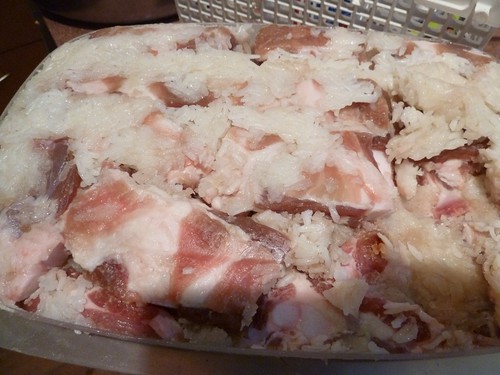
Then I had to make my own version of the dipping sauce common with things like Thai fried chicken. I roasted chilis, garlic and shallots (for which I’d fortunately paid Argyle street prices):
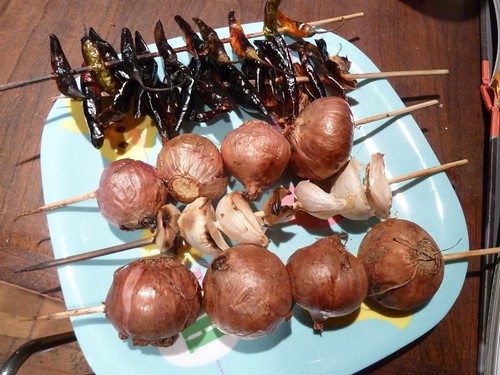
Another snag: my supposed seedless tamarind paste from Argyle street turned out to be, at best, “partly deseeded.” After spending entirely too much time pushing seeds out of it, I went to Patel Bros. on Devon and bought a jar of liquid tamarind goo. Which was probably much more concentrated, because the stuff was puckeringly sour when I first mixed it up. But I added a bunch of honey, and some more chilis and garlic, and in time, I had a pretty good imitation of Spoon’s version of the same sauce. I fried up the rib tips, and then it was time to assemble my dish with the thing that truly made it Chicago rib tips…
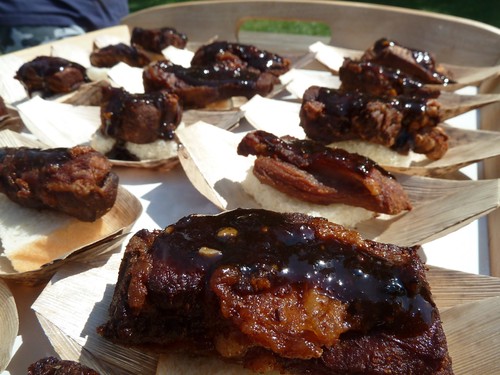
a little piece of white bread underneath the rib, soaking up the sauce.
* * *
Something I learned at the LTH picnic, may be a hitherto unknown factoid for all I know: the reason Mario’s on Taylor Street, the legendary Italian lemonade joint, closes a week or two after Labor Day isn’t just that the season is over then. But Mario, the dad who started it, apparently keeled over while making the lemonade one day, a September 16th as a matter of fact. And so his widow decided, from then on, to honor his memory by closing down after the weekend closest to that day.
Mario’s has peach– for a very few days before closing in memoriam Mario for this year. I’ve been skeptical about it in the past— they tend to make peach when peaches get cheap, regardless of whether they’re much good or not— but this year peaches have been great, so I have hope. Go get you some!
And if you haven’t seen:
Tags:
CSA,
David Thompson,
Italian ice,
lthforum,
Mario's,
Paris Club,
thai


 Posted in
Posted in 




